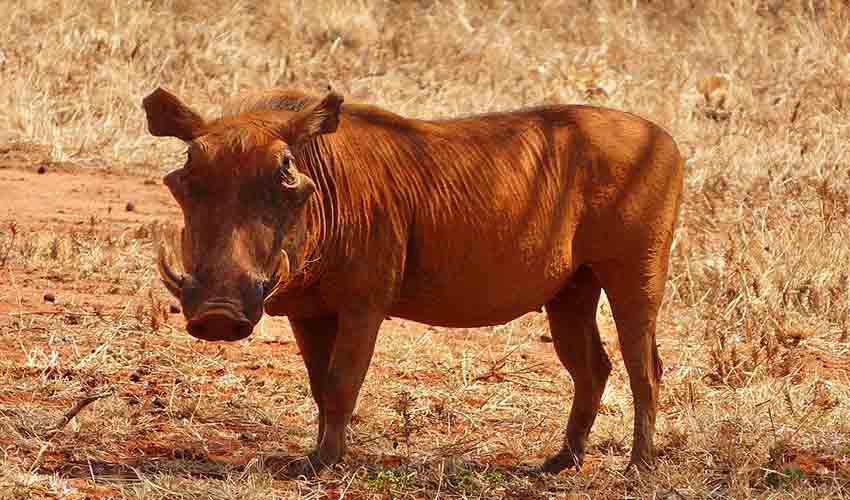Phacochoerus – Warthogs
Pumbas! Forever be remembered for their Hakuna Matata!
These mammals are easily recognizable by their robust bodies, large heads adorned with bristly hair, and, notably, their impressive tusks. These tusks, which can range from 25 to 64 centimeters (10 to 25 inches) in length, are a defining characteristic and serve as tools for defense and digging.
Physically, warthogs are distinguished by their somewhat disproportionate appearance, with relatively large heads and shorter bodies. Their skin is covered with sparse, coarse hair, which gives them a somewhat scruffy look. Another distinctive feature is the presence of large, padded knees, which are actually callouses that form over time. These callouses are particularly useful as they spend a considerable amount of time kneeling to forage for food in the grasslands.
As largely herbivorous animals, warthogs feed primarily on grasses, roots, berries, and other plant material, making them important for maintaining the balance of their ecosystems. However, they are not strictly herbivores; they are known to consume small animals, insects, and carrion when the opportunity arises. This omnivorous diet allows them to adapt to varying availability of food resources throughout the seasons.
Warthogs exhibit unique behaviors, such as using their tusks and snouts to dig burrows in the earth. These burrows serve as shelters from extreme weather and protection against predators. Interestingly, warthogs are known to back into their burrows, tusks facing outward, ready to defend against any intrusion. This behavior underscores their resourcefulness and adaptability to the challenges of their environment.
The social structure of warthogs is based on female-centered groups, known as sounders, which usually consist of related females and their offspring. Males, on the other hand, are more solitary or form bachelor groups and only join the sounders during the mating season. This social dynamic plays a crucial role in their survival and reproductive strategies.
Species in this genus
Common warthog
Widely distributed and the only pigs that live in grasslands
Desert warthog
A “comeback species” in African wildlife studies



